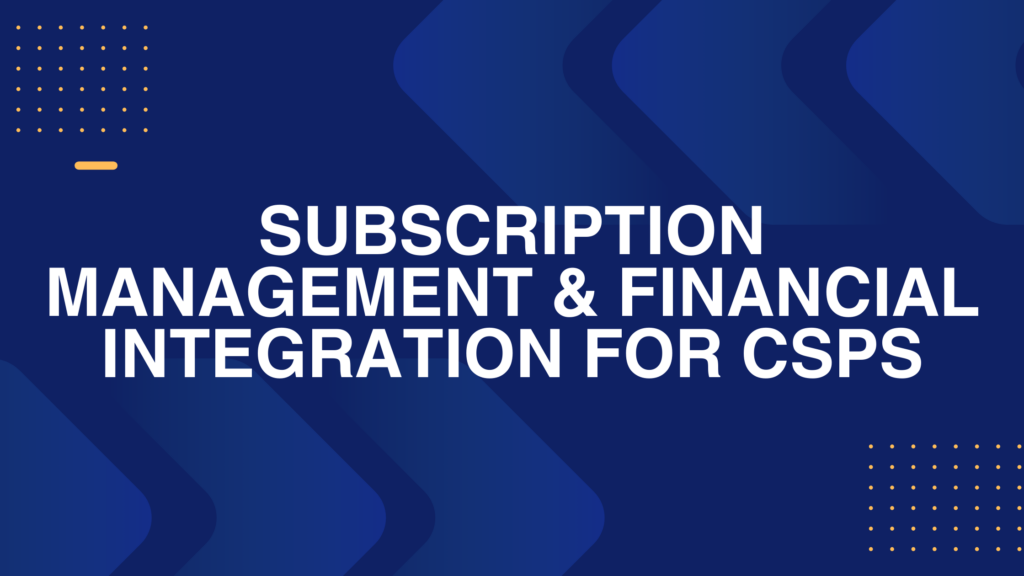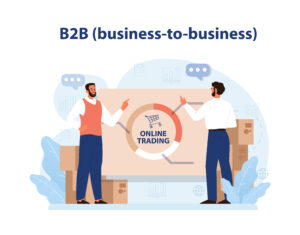Effective Subscription Management Strategies for CSP Partners
Microsoft CSP partners stand at the forefront of innovation and customer engagement. To maintain this edge, robust subscription management strategies must be implemented to adapt to the evolving market. Here, we outline comprehensive tactics to refine your subscription management and ensure your services resonate with both new and existing customers.
Automating the Subscription Lifecycle for Peak Efficiency
Automating subscription lifecycle management is not just a convenience; it’s a transformative strategy that propels CSPs toward operational excellence. Tools that facilitate the automation of subscription initiation, usage tracking, and the timely execution of renewals and terminations are more than just digital conveniences—they are the silent workhorses that ensure precision and accuracy in customer account management. By investing in software that offers this automation, CSP partners can significantly reduce manual labor, cut down on human error, and allow for real-time updates and reporting.
Tailoring Subscriptions for Memorable Customer Experiences
Customization is key in a service-driven industry. Microsoft CSPs must look beyond one-size-fits-all solutions and towards a more tailored approach that aligns with their customers’ unique needs. This means offering personalized subscription options that provide the flexibility to scale services up or down. By doing so, CSPs demonstrate an understanding of their customers’ shifting demands, which can vary from expanded services during peak business seasons to scaled-back options when demand wanes.
Ensuring Cost Transparency for Trust and Loyalty
Cost transparency is a vital component of subscription management. Customers appreciate knowing what they’re paying for, and CSPs that can break down costs and explain them in simple terms build trust and loyalty. Provide your customers with clear, itemized bills and be upfront about any changes in pricing or services. This fosters a positive relationship and empowers customers to make informed decisions about their subscriptions.
Streamlining Upgrades and Add-Ons
The path to upgrading or adding additional services should be as frictionless as possible. Microsoft CSPs can gain a competitive advantage by creating straightforward processes for customers to enhance their service packages. Streamlining these processes reduces customer effort, increases satisfaction, and can lead to higher adoption rates of new features or services.
Responsive Support for Subscription Queries
Responsive customer support is essential for managing subscriptions effectively. Quick and helpful responses to any subscription-related queries can prevent frustration and churn. Ensure that your support team is well-versed in all aspects of the CSP offerings and can provide assistance that’s both efficient and empathetic.
Leveraging Data Analytics for Predictive Subscription Management
Data analytics can play a crucial role in understanding subscription patterns and predicting future trends. By analyzing customer usage data, CSPs can proactively offer upgrades or additional services at the right time, anticipate when a customer might downscale, and prepare to address their concerns proactively.
Integrating Feedback Loops for Continuous Improvement
A strategy that is often overlooked but can make a significant difference is the integration of feedback loops into the subscription management process. Regularly soliciting and acting upon customer feedback demonstrates a commitment to continuous improvement and customer satisfaction. This can lead to enhanced services and a better overall experience, encouraging long-term customer retention.
Understanding CSP Billing Cycles for Better Customer Management
For Microsoft partners, a clear understanding of billing cycles is essential for effective customer management:
Regularly Review and Optimize Billing Cycles
Billing cycles should move in harmony with customer needs and preferences. Regular analyses of billing cycle effectiveness can reveal insights that lead to better alignment with customer usage patterns. This could mean offering different billing intervals—monthly, quarterly, or annually—depending on the services used and the customer’s financial planning. The aim is to offer options that fit organically into the customer’s business operations, thereby enhancing their satisfaction and your revenue predictability.
Transparent Billing Communications
Transparency in billing communications is non-negotiable. In the intricate web of services and subscriptions, clarity becomes a beacon that guides customer trust. Detailed billing statements should go beyond mere numbers; they should tell the story of the customer’s usage, clearly delineating charges and any changes to the subscription in simple language. It’s about creating a billing narrative that the customer can read and understand without a glossary of terms.
Adaptive Billing
The agility to adapt to changing circumstances can set a CSP apart. Whether it’s a temporary spike in usage due to a project ramp-up or a scale-down as operations stabilize, the ability to modify billing cycles quickly and efficiently speaks volumes about a CSP’s customer-centric approach. This means having systems in place that can promptly process changes, ensuring customers feel heard and valued.
Predictive Billing
Predictive analytics can transform billing from a reactive process into a proactive strategy. By understanding usage trends, CSPs can anticipate customer needs and offer personalized billing solutions before the customer even requests them. This helps to demonstrate your commitment to their business’s efficiency.
Integrated Billing Solutions
Integrating billing with service usage tracking offers a unified view, making it easier to manage the financial aspect of subscription services. It’s about creating a seamless experience for both the customer and the CSP, where billing becomes a natural extension of the service provided.
Making Billing and Payments Easy with Automation for CSPs
Leverage Automated Invoicing Systems
Setting up a system that automatically creates and sends out invoices based on what customers use and their plan details means invoices get to customers without mistakes and on time. This is much easier than creating invoices by hand and makes sure everyone is on the same page about costs.
Offer Multiple Payment Options
People like to have options on how to pay. By accepting different payment methods, like cards, online bank payments, or digital wallets, customers can pick what works best for them. This makes paying easier, so customers are more likely to pay on time.
Reminders
Automatic reminders are part of the package too. They tell customers when it’s time to pay or if they missed a payment. These reminders are friendly and help keep the cash flowing without needing to check everything yourself.
Integrating CSP Management with QuickBooks
For Microsoft CSPs, integrating QuickBooks into their management systems offers a transformative approach to handling financial operations. It’s like having a digital financial assistant that streamlines every monetary aspect of the business. Let’s break down the benefits of this integration in plain terms.
Real-Time Data Sync
Connecting QuickBooks with your CSP management system is like putting the heart of your financial operations on autopilot. You’ll have instant access to the latest financial data, which means you can see up-to-date information on subscriptions, payments, and revenue. It’s like having a dashboard that shows you the health of your business finances at a glance, without having to sift through piles of paperwork.
Automated Billing Meets Accounting
Once you’ve got QuickBooks integrated, it starts to automatically take care of the numbers every time you bill a customer. This means the billing information flows right into your accounting records without you lifting a finger. It not only saves you from the monotonous task of entering data but also sharply cuts down the chances of making mistakes.
Clear Financial Reports
With all your financials flowing through QuickBooks, generating reports becomes a breeze. You’ll be able to pull up insights about your financial status whenever you need them, which is crucial for making informed business decisions. Imagine being able to track your profitability or check on expenses with just a few clicks.
Prompt Invoicing
The moment services are delivered, QuickBooks can generate an invoice. This swift invoicing leads to faster payments from customers, improving your cash flow. It’s a straightforward way to make sure that the money you’re owed gets into your account sooner rather than later.
Tax Readiness
When tax season rolls around, having your financials neatly recorded in QuickBooks means you’re already prepared. This integration simplifies tax reporting, providing you with all the necessary figures and statements needed to meet tax obligations without the last-minute scramble.
In conclusion, mastering subscription management and integrating financial operations with systems like QuickBooks are critical steps toward operational excellence. By adopting effective subscription management strategies, understanding and optimizing billing cycles, and leveraging automation in invoicing and payments, CSPs can enhance customer satisfaction and streamline financial operations. The integration with QuickBooks further simplifies financial management, allowing CSPs to focus more on strategic growth initiatives. Implementing these best practices will position CSPs for success in the competitive cloud services market, ensuring they can meet their customers’ needs with efficiency and precision.



